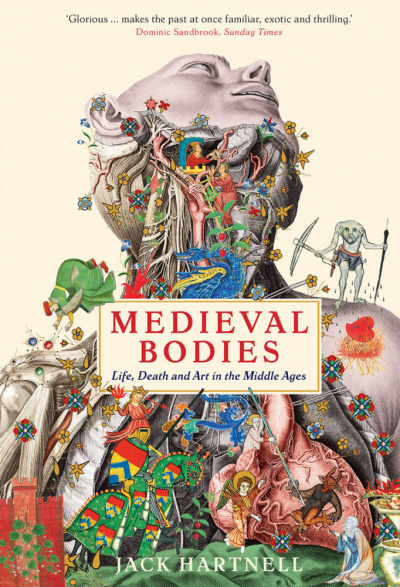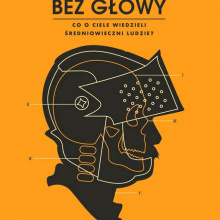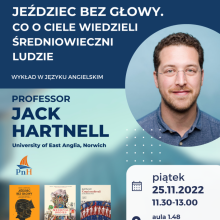The Dean of the Faculty of History, dr hab. Arkadiusz Janicki, prof. UG invites you to another "Friday at the History Faculty". This time the speaker will be Professor Jack Hartnell from the University of East Anglia, Norwich, UK, author of the book 'The Headless Horseman. What medieval people knew about the body'.
The meeting will take place on Friday — November 25, at 11.30 am in Hall 1.48 and will be chaired by prof. dr hab. Beata Możejko. Three copies of this fascinating monograph will be drawn among the listeners.
Jack Hartnell is a lecturer in Art History at the University of East Anglia, Norwich (University of East Anglia, Norwich.) He completed his PhD in 2014. - The Courtauld Institute of Art, London. Before joining UEA in 2017, he held numerous internships and fellowships, such as at the Victoria and Albert Museum in London, Columbia University, New York and the Max-Planck Institute in Berlin.
His academic work and teaching focuses on art history and visual culture in the broadest sense, exploring the relationship between art objects, their makers and their audiences. In his lectures, he refers to material from antiquity to the present day.

In 2018, he published the monograph 'Medieval Bodies: Life, Death and Art in the Middle Ages', announced as A SUNDAY TIMES HISTORY BOOK OF THE YEAR.
From this book we learn:
What was the medieval way to prevent baldness?
Where did a tribe of headless people live?
What character traits can you tell from the appearance of hair?
Why was the heart more important than the stomach in the Middle Ages?
We often think of the Middle Ages as the Dark Ages, halting human development for more than a thousand years. Today we would describe many of the medical procedures used in the Middle Ages as torture. Jack Hartnell literally shows from head to toe the fascinating face of this period.
The author dispels many myths about the Middle Ages and shows that we modern people have much more in common with medieval people than we might initially think. How does the medieval belief in the existence of a tribe of headless giants differ from the belief in the existence of green men inhabiting other planets?
Come and join us!


